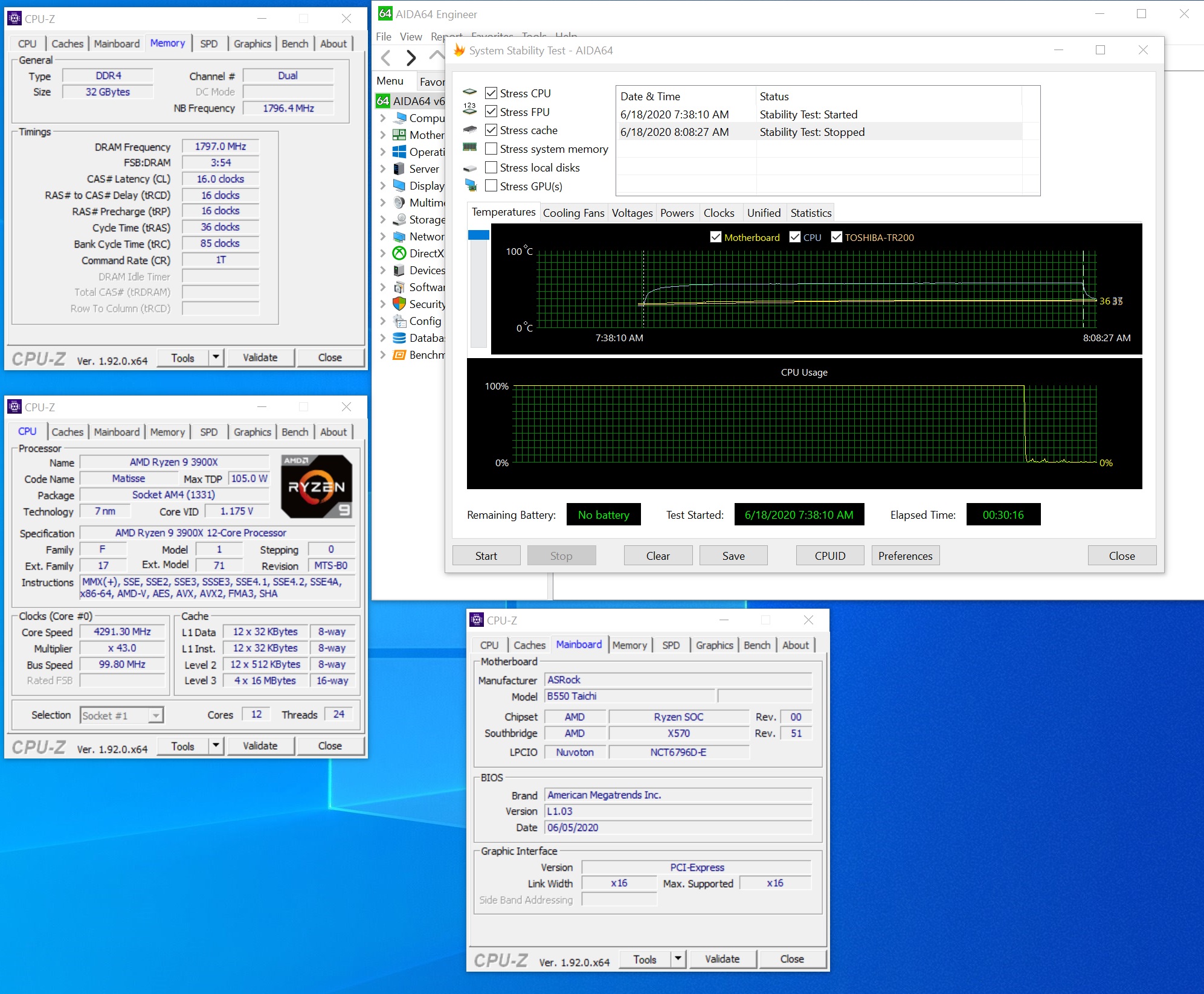Why you can trust Tom's Hardware
Our standard benchmarks and power tests are performed using the CPU’s stock frequencies (including stock Thermal Velocity Boost), with all power-saving features enabled. Optimized defaults are set in the BIOS and the memory is set using the XMP profiles. For this baseline testing, Windows is set to High Performance, before we switch over to Balanced during power testing, so the PC idles properly.
Synthetic Benchmarks
Synthetics are a great tool to figure out if a board is running out of spec, as identical settings should produce similar performance results. Advanced memory timings are the one place where motherboard makers can still optimize for either stability or performance, though, and those settings can impact some testing.

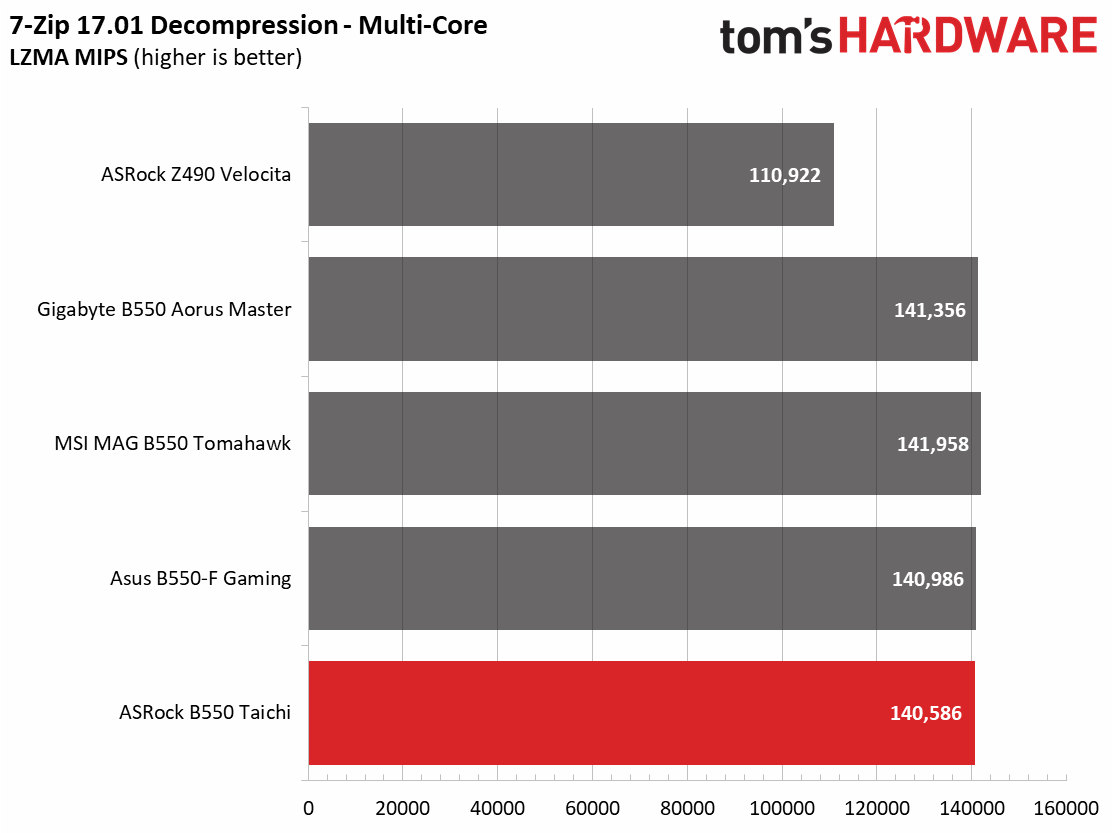

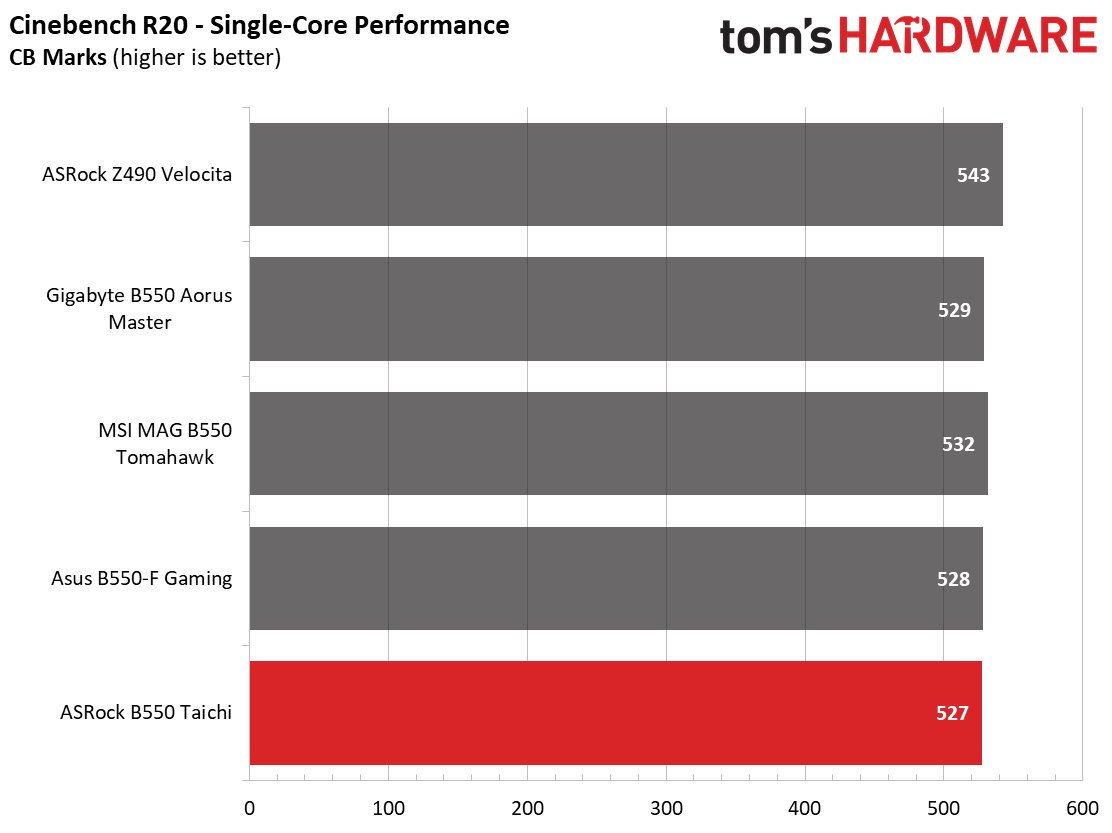
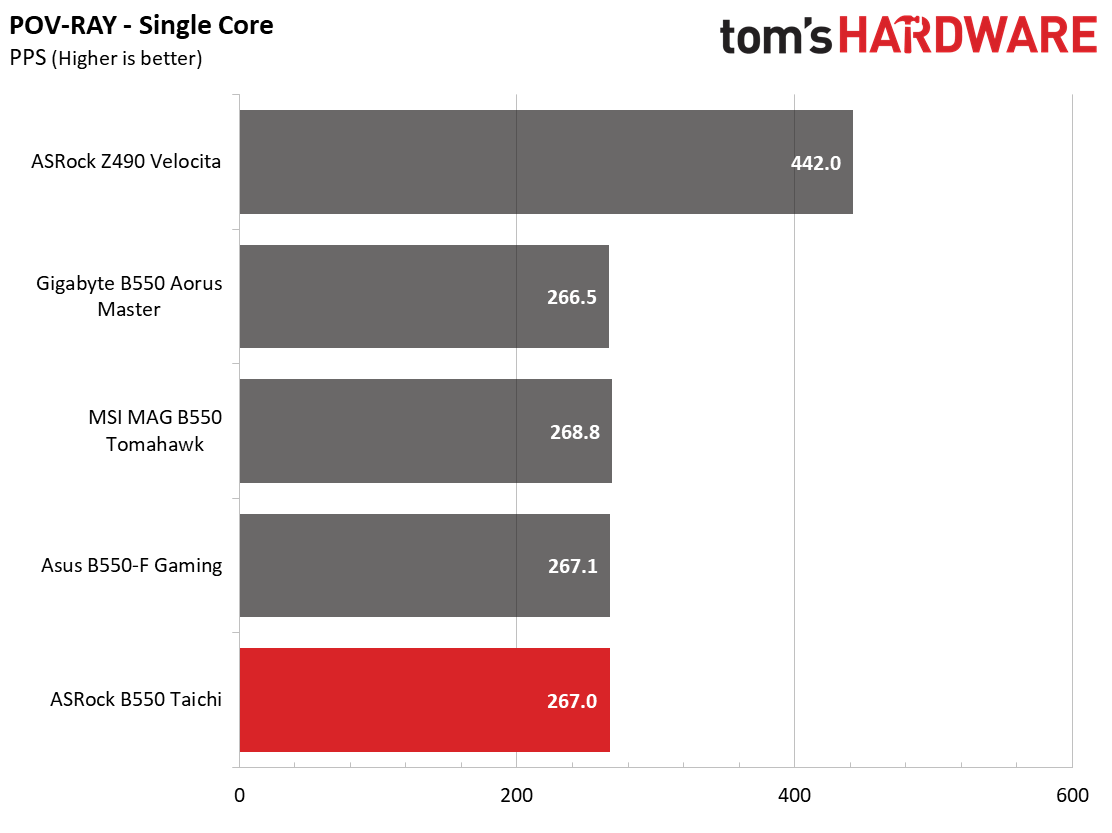

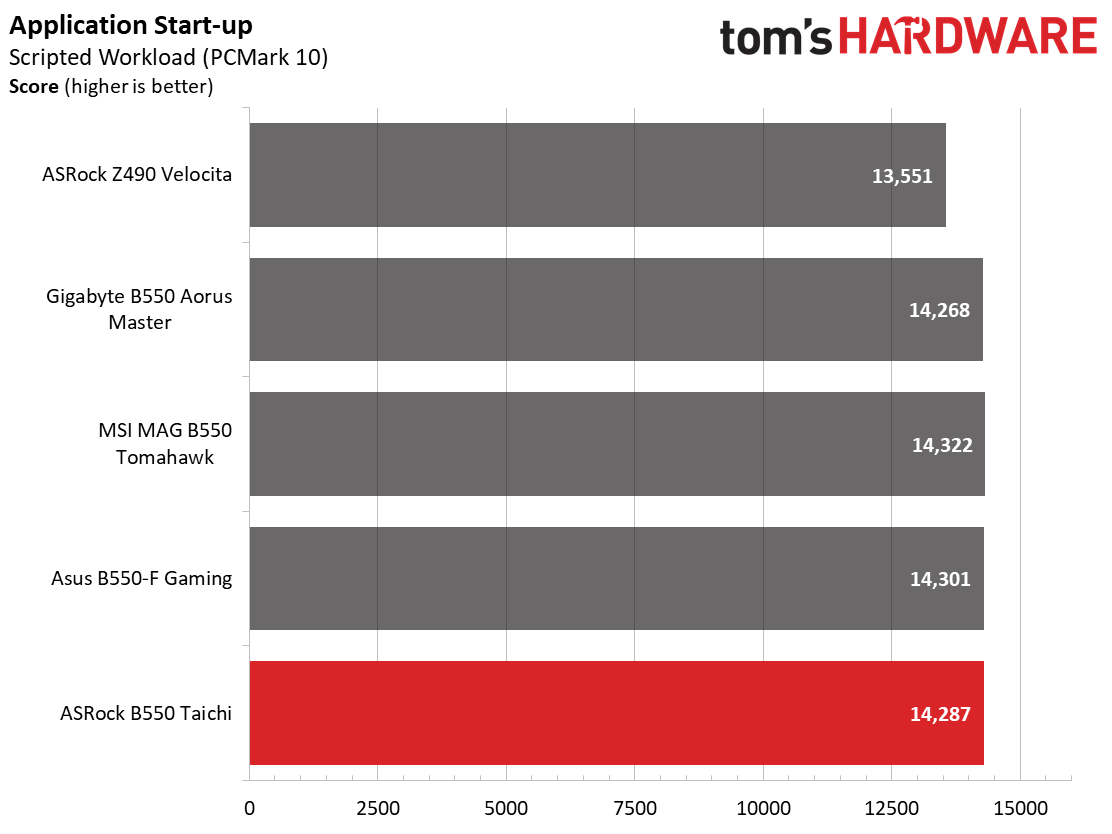

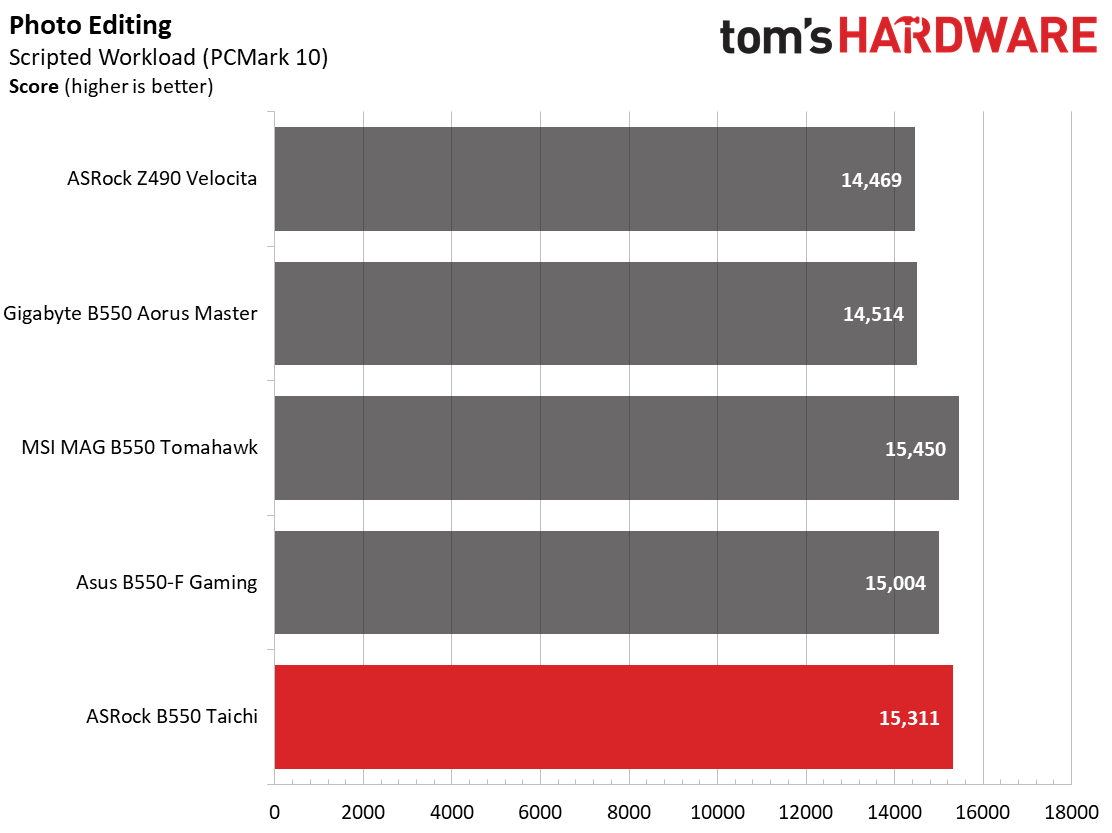

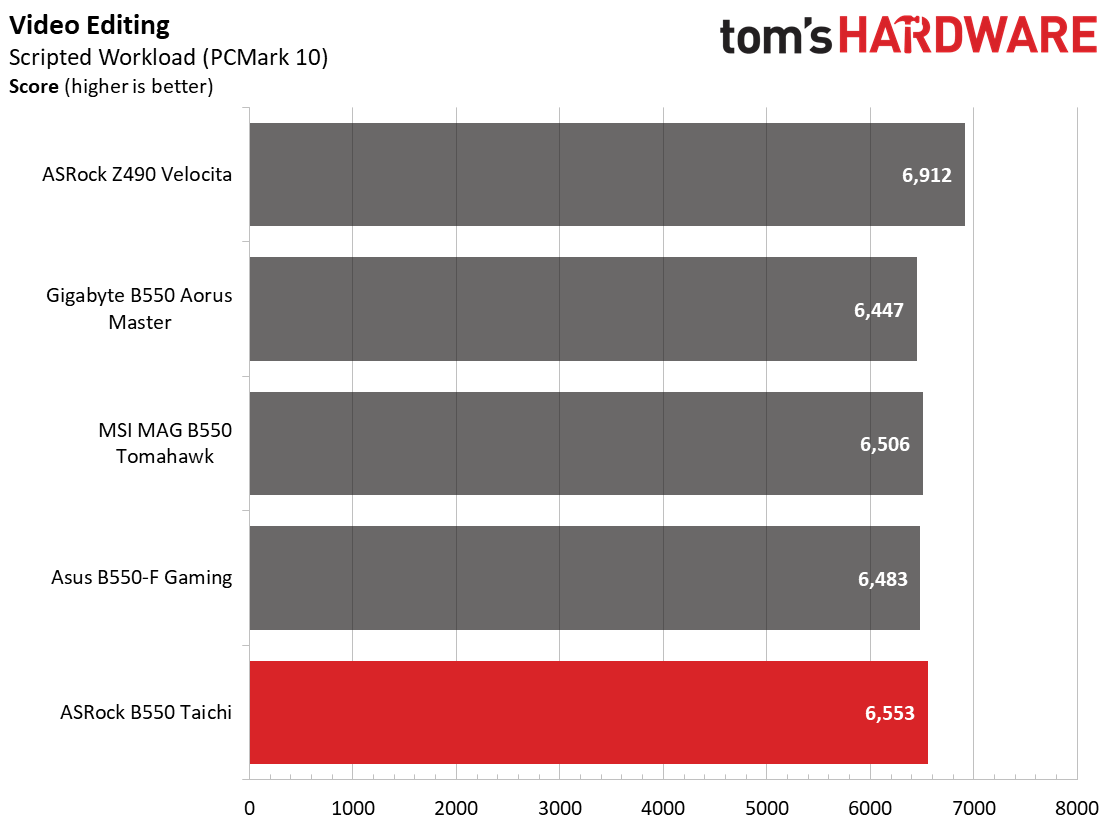

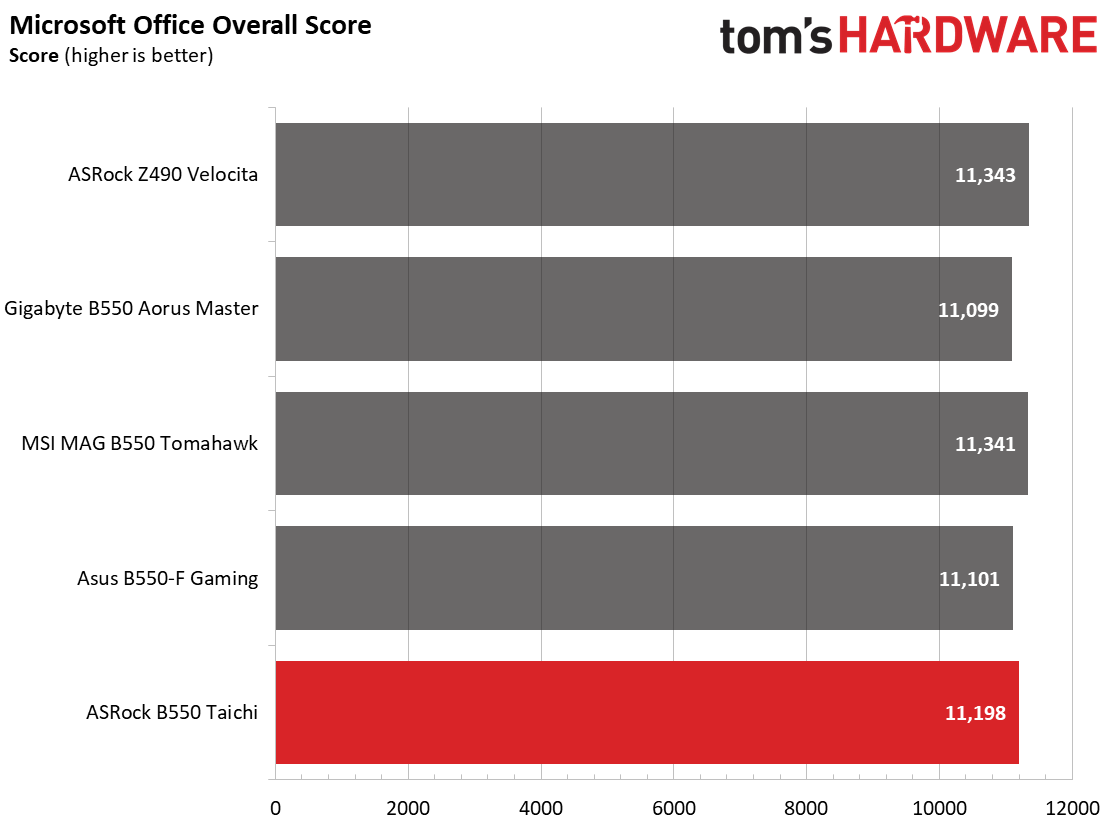

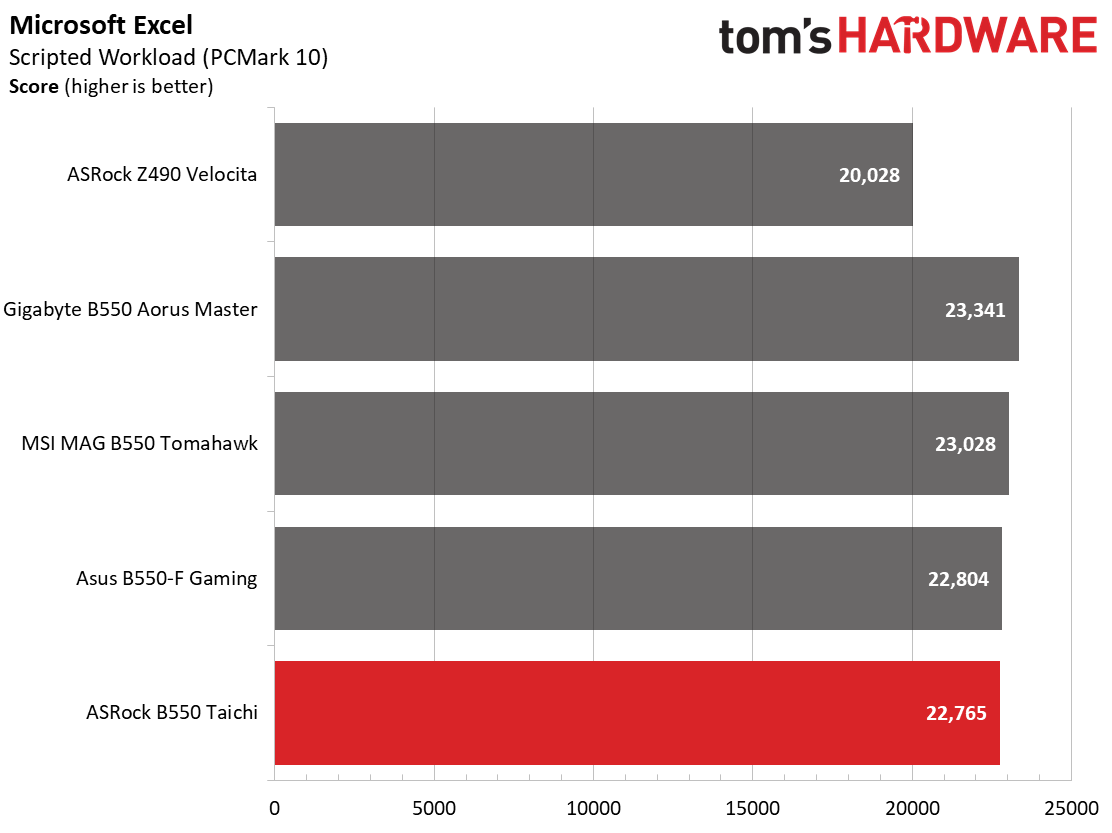
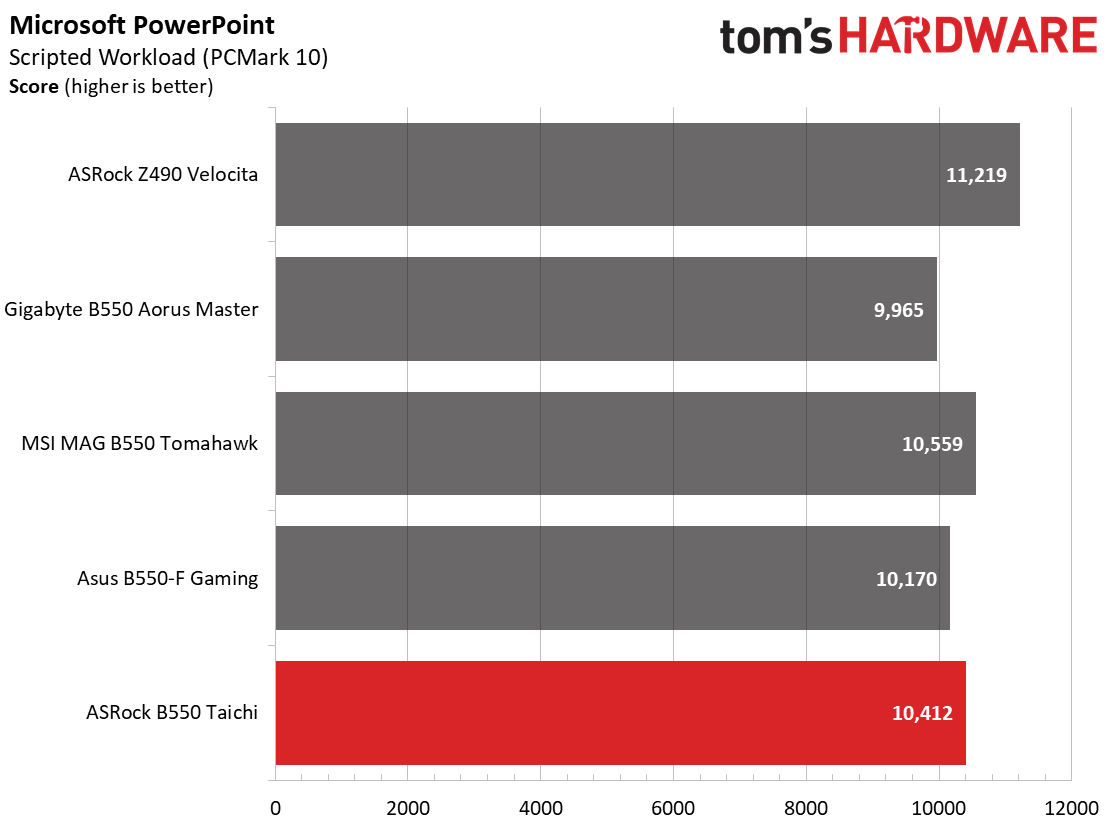


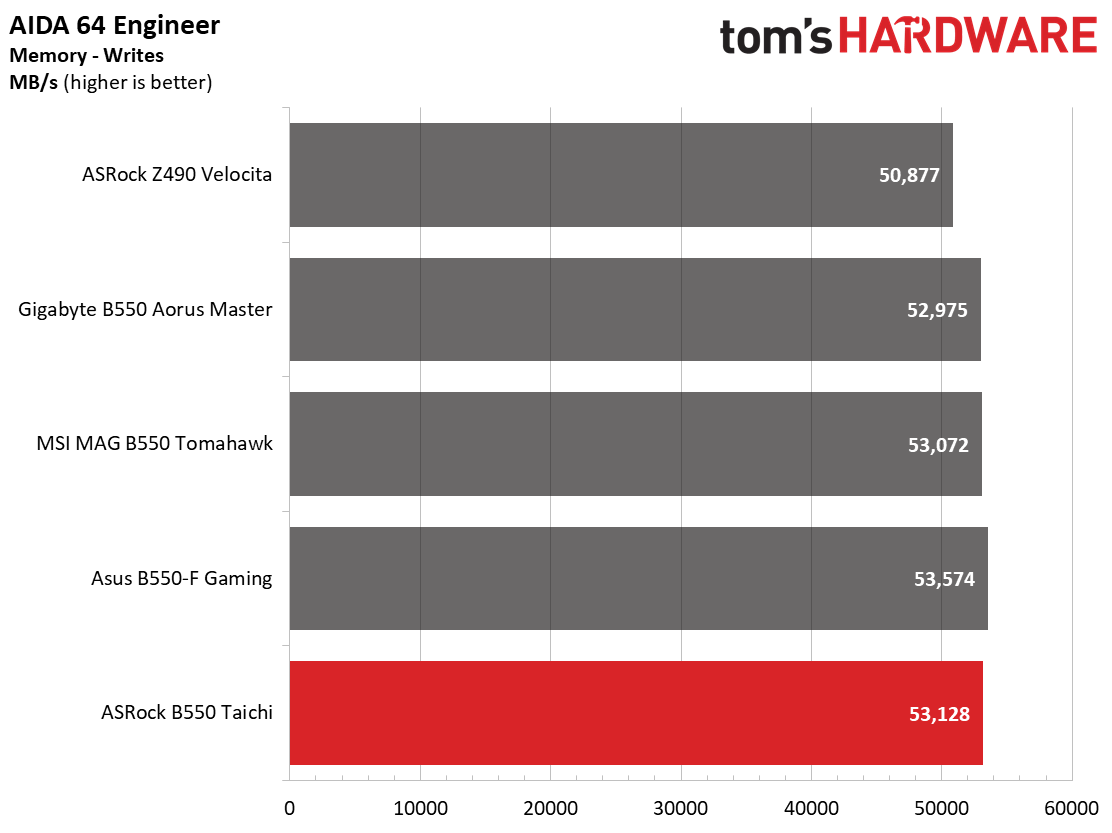

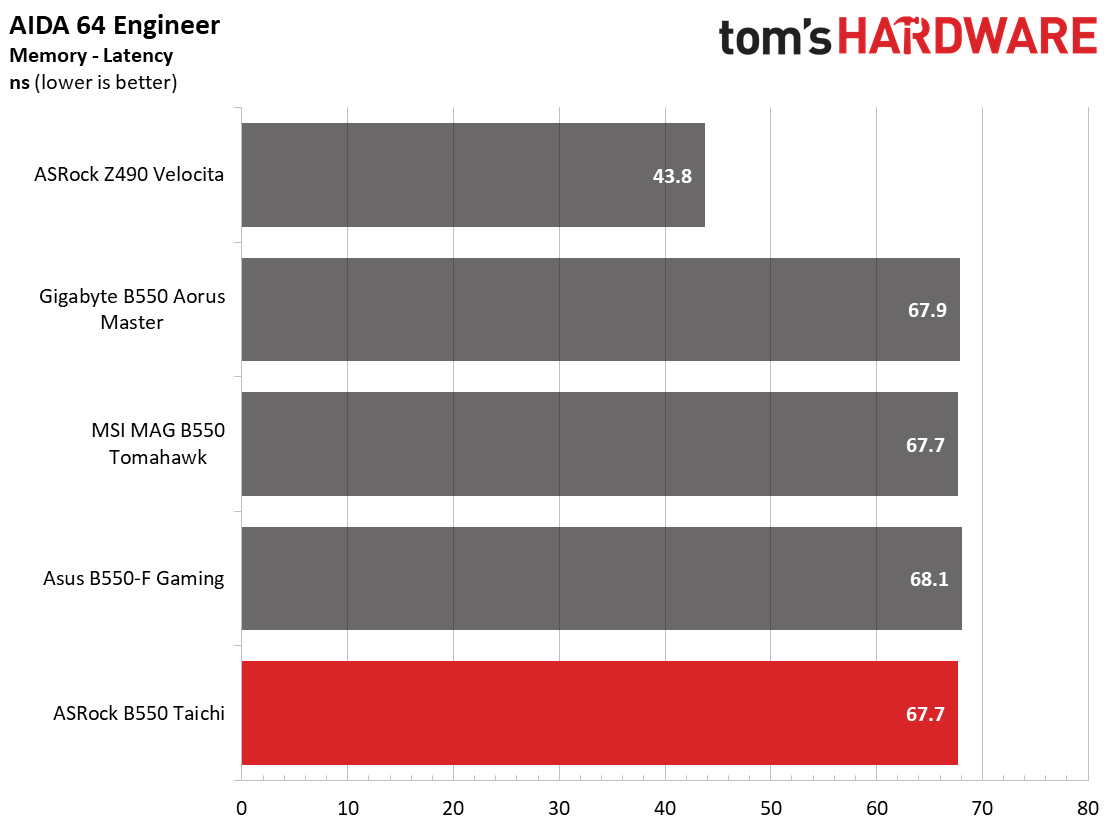
In our synthetic benchmarks, the B550 Taichi kept up with the other boards tested and the results fell within the expected range. There’s nothing out of the ordinary here.
Timed Applications

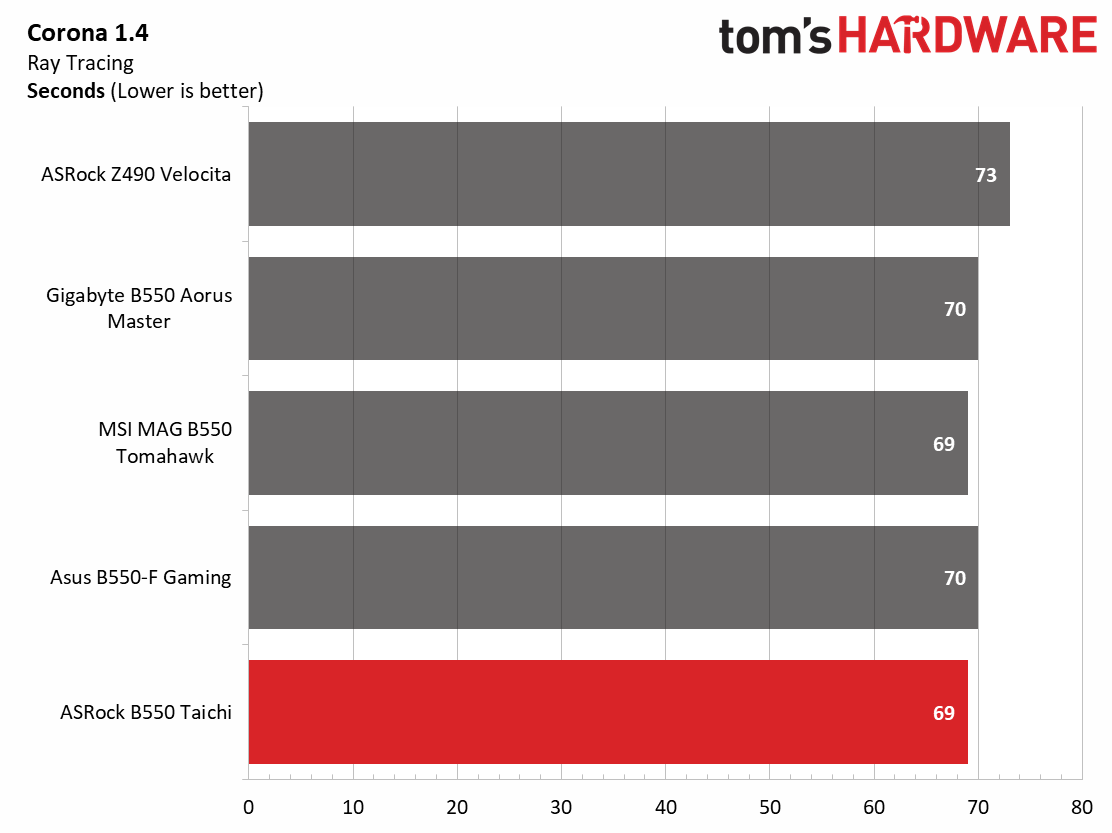
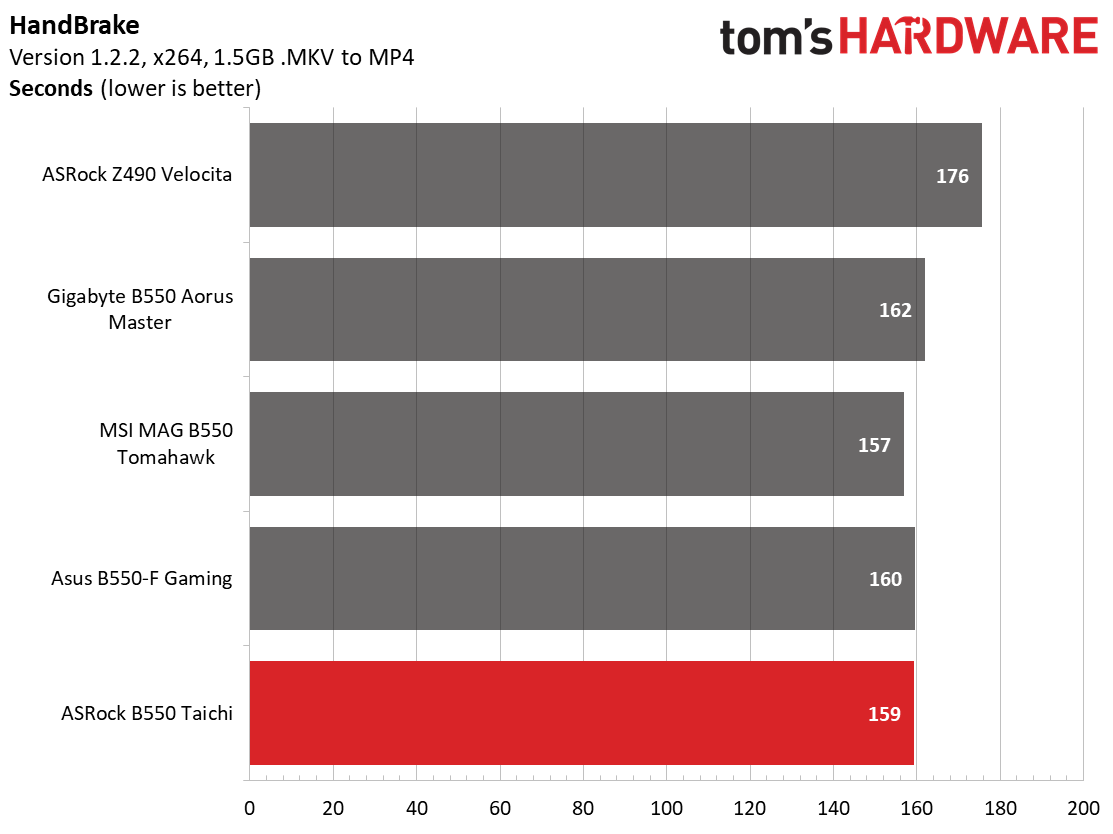

In our timed application tests, the Taichi performed well against its peers.
3D Games and 3DMark

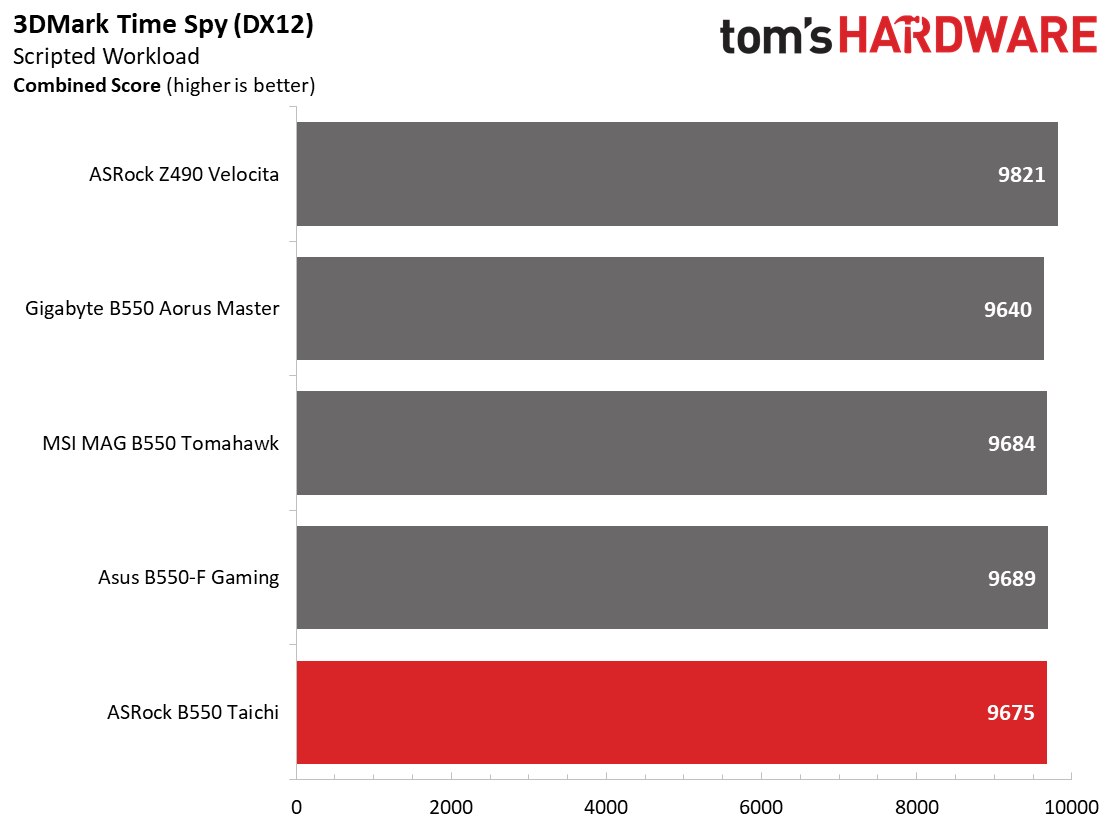

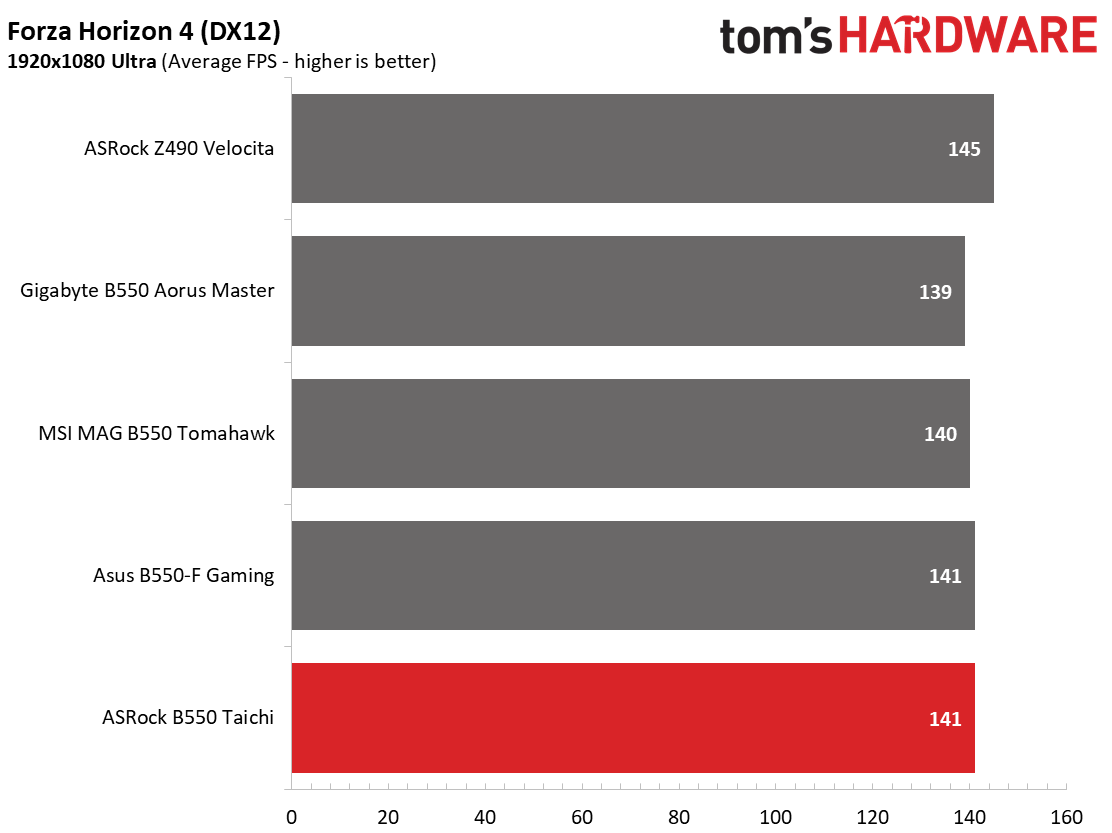
We’ve recently updated our game tests to The Division 2 and Forza Horizon 4. The games are run at 1920x1080 resolution using the Ultra preset. As the resolution goes up, the CPU tends to have less of an impact and most games at this resolution in the first place. The goal with these settings is to determine if there are differences in performance at the most commonly used resolution with settings most people use or at least strive for.
During our gaming and 3DMark tests, the B550 Taichi performed similarly to the other B550 boards we’ve tested so far.
Power Consumption and VRM Temperatures
For power testing, we use AIDA64’s System Stability Test with Stress CPU, FPU and Cache enabled, using the peak power consumption value. The wattage reading is taken from the wall via a Kill-A-Watt meter to capture the entire ecosystem. The only variable that changes is the motherboard; all other parts are the same.
Get Tom's Hardware's best news and in-depth reviews, straight to your inbox.
Power use on our B550 Taichi was the highest we’ve seen so far by several watts at both idle and load. Using the AMD Balanced Power Plan, our system idled at 58W and peaked at 221W. This is six and eight degrees Celsius higher than the next highest value. Power use according to HWinfo for only the CPU peaked at 141W as did the other three B550 boards we’ve tested. With the recent news coming out that some AMD motherboards are misrepresenting power use for more performance, take this with a grain of salt. Our next set of reviews will capture this new value in Hwinfo, so we can better see exactly how each board behaves.
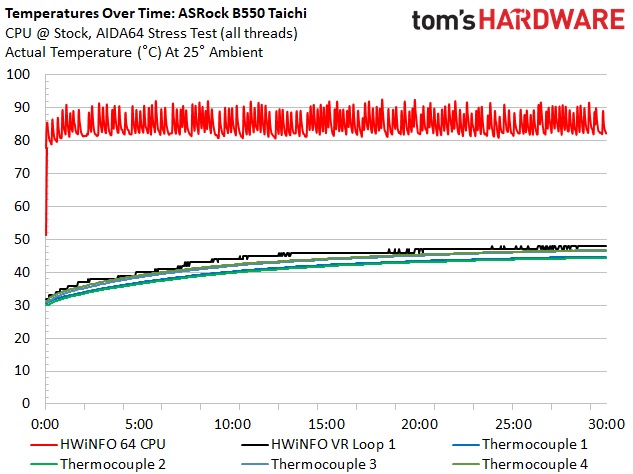
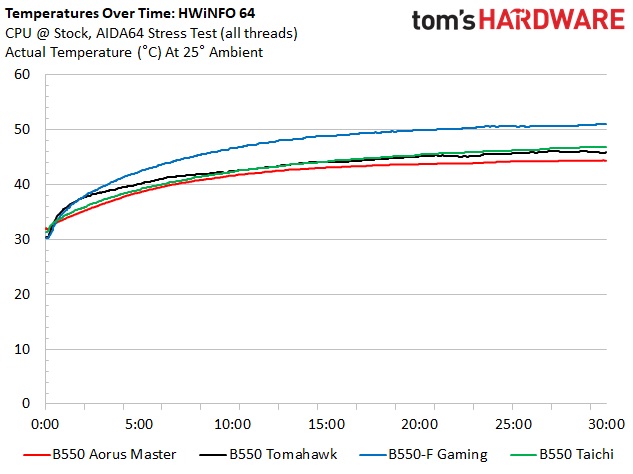
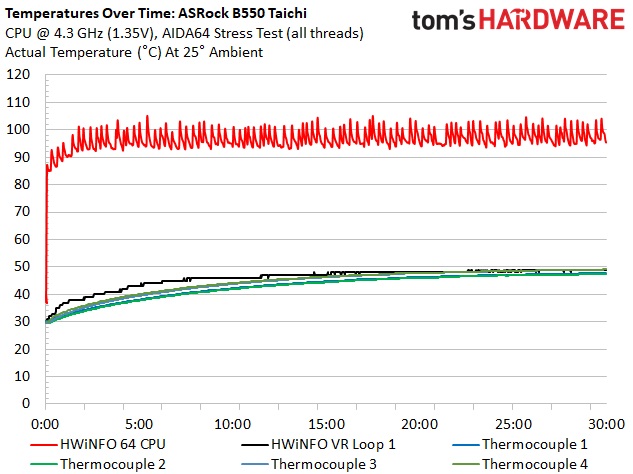
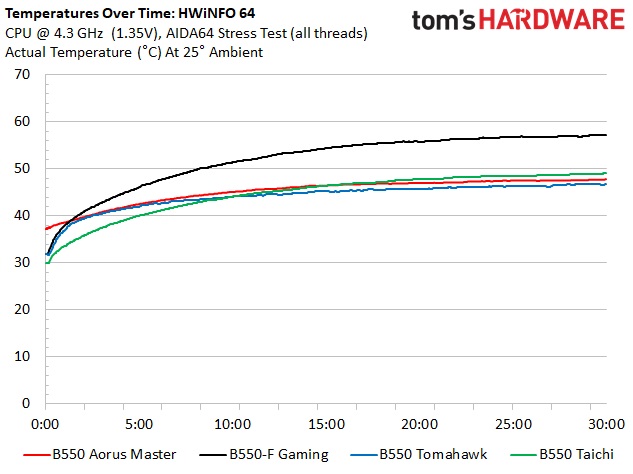
The B550 Taichi’s 14-phase 50A VRMs for the CPU handled our testing without issue. During stock runs, the hottest point on the VRM was 46 degrees Celsius while in Hwinfo it topped out at 48 degrees Celsius. When overclocked to 4.3 GHz and 1.35V VRM temps went up to 49 degrees Celsius with Hwnfo reporting the same. All temperatures are well within operating parameters and close to the Aorus Master and Tomahawk, while the Asus ran the warmest.
Overclocking
There are several ways to overclock on AMD platforms, depending on your goals. If your focus is single-threaded performance, you may want to focus on using Precision Boost Overdrive (PBO) and adjusting its parameters. If you can use all cores and threads, setting a manual CPU multiplier and voltage is likely the better route. While the latter clips peak single-threaded performance a bit, it increases all core/thread performance from the base. To that end, we use 4.3 GHz and 1.35V for an all core/thread overclock.
The B550 Taichi handled our 12c/24t Ryzen 9 3900X overclock without issue. Vdroop was almost non-existent with settings on auto, so it was left there.
On the memory side, we know AMD is limited to around 3600/3733 MHz while keeping FCLK at a 1:1 ratio with the memory. With this in mind, we add two more sticks and run 4x8GB at DDR4 3600, which is AMD’s current sweet spot. The B550 Taichi didn’t have any issues using the XMP profile with our sticks.
Final Thoughts
The ASRock B550 Taichi is priced at $299.99 which is well into X570 territory. For this price, you do receive most of what X570 usually offers, including better board aesthetics, robust power delivery and in this case integrated Wi-Fi. What is missing, however, is a USB 3.2 Gen2 (20 Gbps) port, along with the PCIe lanes and increased flexibility the enthusiast platform allows.
At this price point, it competes with the other flagships like the Asus ROG Strix B550-E Gaming ($279.99), Gigabyte B550 Aorus Master ($279.99), and the MSI MPG B550 Gaming Carbon WiFi ($219.99). Among the similarly priced boards, B550 Taichi is the only one with eight SATA ports (the others have six). The Aorus Master has the most capable VRM and three M.2 slots.
Between the competing boards, the Taichi delivers on looks and features, but for a slight price premium. So long as three M.2 slots SLI capability aren’t issues for you (if they are, go with the Asus B550-E Gaming), the Taichi feels like it’s worth the cost compared to the other B550 flagships. Then there is X570. For around $300 you can buy the X570 Taichi (among other partner boards) with similar features (and three M.2 slots) and have the extra PCIe expansion capabilities.
The ASRock B550 Taichi is a feature-rich motherboard that looks the part of X570. Though it has some of what X570 offers, it isn’t X570. For many users though, this doesn’t matter as they know they won’t install more than a single video card and a single PCIe 4.0 x4 M.2 module, so why not get the pretender, especially if you can lose the chipset fan in the process? Is it worth paying the same amount for fewer features? Worth, like beauty, is in the eye of the beholder, but there is no doubt at around the $300 mark, all boards have blurred the lines between X570 and B550.
MORE: Best Motherboards
MORE: How To Choose A Motherboard
MORE: All Motherboard Content

Joe Shields is a staff writer at Tom’s Hardware. He reviews motherboards and PC components.
-
Makaveli At this price point its better to just go X570.Reply
These B550 boards should be $200 and lower not higher! -
tiggers97 Reply
Was just going to say the same thing. Might as well spend the same money on the X570 Tai Chi. I didn't really see much of anything to tip the scales in the B550s favor at this price point; newer hardware, no chipset fan, maybe better VRM over already pretty good VRM's.Makaveli said:At this price point its better to just go X570.
These B550 boards should be $200 and lower not higher! -
hypocrisyforever Replytiggers97 said:Was just going to say the same thing. Might as well spend the same money on the X570 Tai Chi. I didn't really see much of anything to tip the scales in the B550s favor at this price point; newer hardware, no chipset fan, maybe better VRM over already pretty good VRM's.
I'm of the exact same mindset. I'm now in the market for a good board for an 3900x and had settled on the X570 Tai Chi since it seemed a good value at $300. Of course, now the whole MOBO market is wiped out stock-wise from COVID and the tariffs. Somehow the B550 is priced at the same $300, but is the board that is in stock. So the B550 with less features is priced the same as the X570 with more features, but only the lower-grade one is in stock. Go figure.

